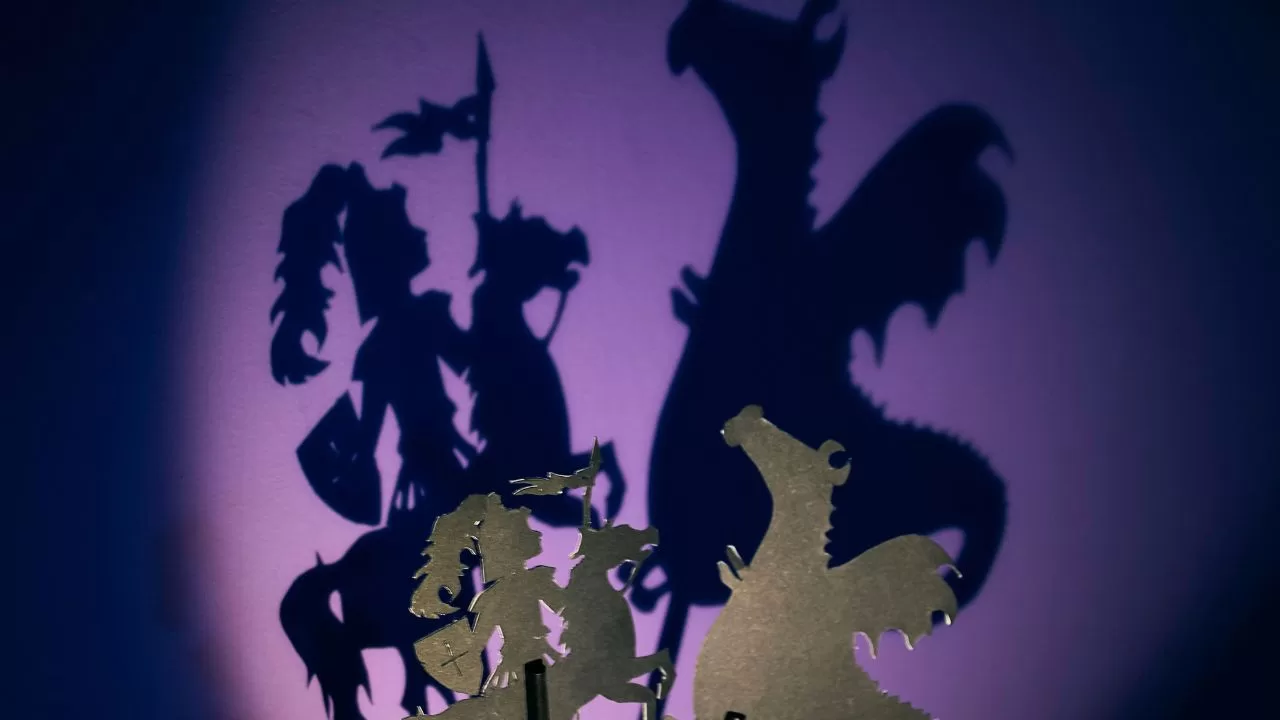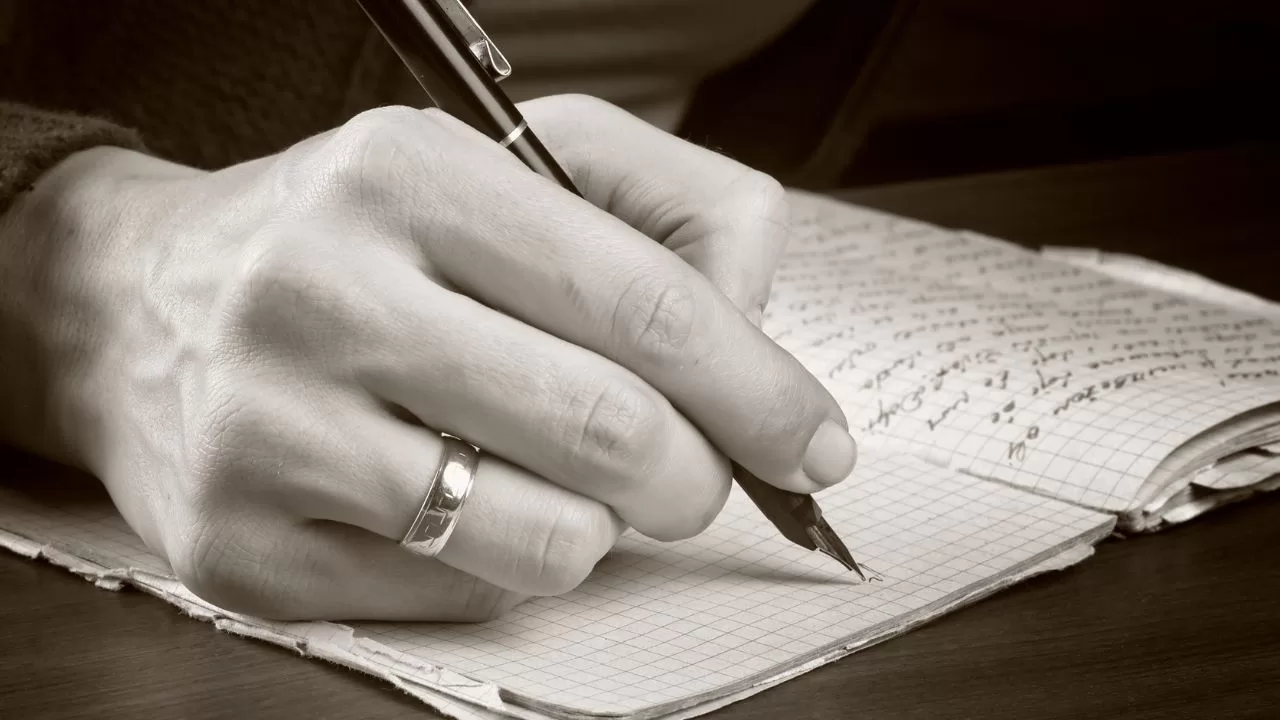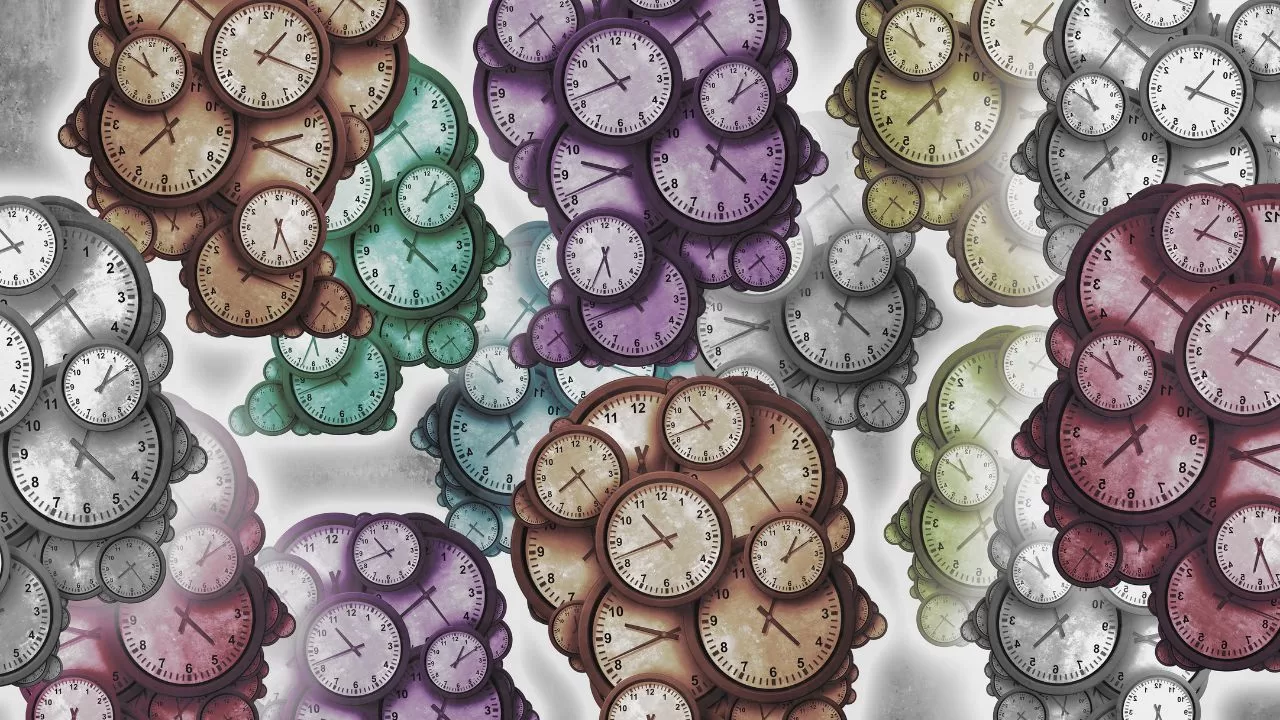- Introduction
- The Evolution of Literary Forms
- The Power of Storytelling
- Themes and Motifs Across Literature
- Literary Giants Through the Ages
- Literature as a Reflection of Society
- Interpreting and Analyzing Literature
- The Digital Age and Literature
- The Universality of Literature
- The Joy of Reading
- Conclusion
- Keywords:
- Key Takeaways
- 10 Frequently Asked Questions
- 1. Why is storytelling such an innate human inclination?
- 2. What role does culture play in shaping literary themes and motifs?
- 3. How have digital platforms influenced the way authors interact with their readers?
- 4. In what ways can literature act as a catalyst for social change?
- 5. How does one differentiate between allegory and symbolism in literature?
- 6. Why do some literary works achieve universality while others remain confined to their cultural context?
- 7. How has the rise of e-books and digital platforms impacted traditional publishing houses?
- 8. Can the joy and benefits of reading be achieved equally through both fiction and non-fiction?
- 9. What is the importance of diversifying one’s reading to include authors from different cultural and historical backgrounds?
- 10. How has literature evolved in its role as a reflection of society over the centuries?
- 10 Myths Debunked
- 1. Myth: Storytelling is a modern invention, popularized by books and films.
- 2. Myth: Digital literature is erasing the traditional forms of literature.
- 3. Myth: Universal themes in literature mean the same thing across all cultures.
- 4. Myth: Great literature can only be produced by professionally trained writers.
- 5. Myth: Literature simply mirrors society without influencing it.
- 6. Myth: Analyzing literature is a rigid process with strict rules.
- 7. Myth: With the advent of digital literature, traditional publishing is dying.
- 8. Myth: Only literary works from major cultures or languages achieve universality.
- 9. Myth: Reading fiction doesn’t offer real-world knowledge or benefits.
- 10. Myth: Literature’s primary purpose is entertainment, not education or introspection.
- Test Your Knowledge
- Check out the Story of Literature Article Series
Introduction
In the quiet hours of a prehistoric night, gathered around a roaring campfire, our ancestors began a tradition that would span millennia. They shared tales of gods and monsters, of love and loss, weaving the fabric of what would become our first understanding of literature. Their voices, echoing in the vast wilderness, captured the heartbeat of humanity, seeking to understand and to be understood.
From those earliest embers, literature has blossomed into an enduring chronicle of our existence. Every age, every civilization, every heart that has felt joy or sorrow, has contributed to this grand mosaic of stories, poems, and songs. It is not merely a collection of words on parchment or screen but a reflection—a mirror—of our deepest desires, our highest aspirations, and our most profound questions.
Time and again, societies rise and fall, but the words remain. Be it the intricate tapestries of ancient epic poems or the succinct musings of modern micro-fiction, literature stands as a testament to our shared experience. It evolves, adapts, but never loses its core essence: the yearning to capture the human spirit in words.
At the crossroads of thought, emotion, and culture, literature is the compass that guides us. Through wars and peace, in prosperity and in poverty, amidst hope and despair, stories have illuminated our path. Their eternal flames shine bright, revealing both our past and hinting at our future.
The annals of literature are a dialogue, a continuous conversation between the author and the reader, spanning across different eras and generations. In reading, we converse not only with the author but also with ourselves and the larger universe. We embark on a journey of discovery, venturing into realms unknown, only to find familiar fragments of our own souls staring back at us.
And so, as we stand on the precipice of yet another chapter in this endless saga, let us delve deep into the caverns of literature. Let us explore its winding paths, climb its towering peaks, and swim in its vast oceans. Let the voices of old and the whispers of the new guide us as we seek to understand, once more, the timeless tale of the human experience.
The Evolution of Literary Forms

Imagine a time, long ago, when the first light of consciousness stirred in our ancient ancestors. Before the written word, before inked symbols on parchment, there was the voice—the primal instrument of expression. Through it, tales took flight on the wings of oral traditions, passed down from one generation to the next. Every word, every pause, every inflection imbued with the weight of preserving history, wisdom, and imagination.
As humanity meandered through the corridors of time, the thirst for more intricate forms of storytelling grew. Pictographs etched on cave walls and clay tablets became the harbingers of a revolution. We were no longer confined to the ephemeral nature of spoken words. We had found a way to make our stories endure, to let them be revisited, revised, and revered.
With the birth of civilization, new genres began to emerge from the collective consciousness. Poetry, with its lyrical magic, danced between rhythm and rhyme, encapsulating emotions too profound for mere prose. From the haunting lines of Sappho’s fragments to the majestic sweep of Homer’s epics, poetry became the heartbeat of a society’s soul.
Yet, it wasn’t long before prose found its own foothold, capturing the more intricate workings of life, the nuanced tapestry of everyday existence. Whereas poetry was the dream, prose became the waking reality, each line reflecting the myriad hues of human experience.
Drama, another cornerstone of literary evolution, brought stories to life in the most visceral way possible. Through the ancient amphitheaters of Greece, where tragedies and comedies played out the extremes of human emotion, to the grand Elizabethan stages that bore witness to the genius of Shakespeare, drama became a mirror to society. It laid bare our follies, our fears, our ambitions, and our loves.
The novel, a relatively younger entrant in the pantheon of literary forms, revolutionized storytelling. With its expansive canvas, it delved deep into characters, settings, and plots, offering readers an immersive experience. The likes of “Don Quixote” to “War and Peace” showcased the novel’s unparalleled power to create universes, bound only by the limits of the author’s imagination.
However, as formidable as these forms were, they never remained static. Like rivers carving through landscapes, they evolved, giving birth to sub-genres, styles, and movements. From the romantics to the realists, from gothic horrors to sci-fi wonders, literature continued its inexorable march forward.
And now, in our modern age, the digital realm has beckoned. With it comes a new wave of literary forms: blogs, tweets, digital novels, interactive narratives, and more. Literature, once confined to the physical, now thrives in the virtual, echoing the age-old need to communicate, to express, to tell our stories.
Yet, whether it’s a tale recounted by a tribal elder under a starlit sky or a digital short story read on a glowing screen, the essence remains unchanged. Literature, in all its forms, captures the eternal ebb and flow of the human spirit, reminding us of where we’ve been and hinting at where we might go next.
The Power of Storytelling

In the vast expanse of a deep, velvety night, when the first storytellers painted tales with their words, there was a magic at play— a magic that would stand the test of time and resonate across civilizations. This magic, in its purest essence, is the power of storytelling.
The role of storytelling in literature is monumental. Like an artist who paints with a delicate brush, a storyteller weaves intricate patterns with words, crafting tales that transcend the barriers of time and space. Through these tales, they impart lessons, evoke emotions, and depict the infinite shades of human existence. Where direct communication may falter, a well-spun story thrives, sneaking past our defenses, urging us to confront truths, ponder mysteries, and feel emotions we might have otherwise overlooked.
For instance, the age-old parables and fables from diverse cultures were not mere tales for entertainment. Instead, they conveyed complex morals and ethical dilemmas, making the intangible graspable and the profound approachable. Think of Aesop’s fables—how a story about a tortoise and a hare transcends a mere race and delves into the philosophy of persistence.
But what is it about stories that captivate the human psyche so profoundly?
Psychologically, humans are pattern-seeking creatures. We yearn for coherence, for understanding, for meaning. Stories offer us this coherence. They frame the chaos of our lives within a structure, beginning, middle, and end. They provide us with a sense of purpose, direction, and even destiny. It’s no wonder that from childhood to our twilight years, stories act as compasses, guiding us through the mazes of existence.
Furthermore, stories serve as vehicles for empathy. Through them, we step into the shoes of protagonists, feel their pains, their joys, their dilemmas. Such experiences broaden our horizons, teaching us to understand and appreciate perspectives other than our own. We learn that beneath the varied tapestry of human experience lies a shared core of emotions and desires.
Culturally, storytelling has been instrumental in shaping civilizations. The epics of Ramayana and Mahabharata in India, the tales of the Norse gods in Scandinavia, the legends of King Arthur in Britain—all have influenced their societies’ values, ethics, and perceptions. These tales, passed down through generations, have become cultural cornerstones, providing identity, fostering unity, and offering wisdom.
In conclusion, storytelling is not just a form of entertainment. It is a beacon of humanity, shedding light on our deepest fears and highest hopes. It stitches together the fabric of society, one tale at a time, creating a mosaic of shared experiences and lessons. In the heart of every story lies a sliver of our collective soul, reflecting who we are, who we’ve been, and perhaps, who we aspire to be.
Themes and Motifs Across Literature

In the ever-evolving tapestry of literature, certain threads remain constant, weaving through epochs, civilizations, and genres. These threads, the themes, and motifs that resonate universally, tie our collective experiences together, highlighting the shared essence of humanity. Be it the winding streets of Victorian England, the rugged landscapes of African plains, or the bustling markets of ancient Persia, some sentiments remain unwaveringly human.
Love, perhaps the most timeless of themes, has been the beating heart of countless tales. From the passionate verses of Pablo Neruda to the tragic romance of Romeo and Juliet, love in all its forms—unrequited, eternal, forbidden—has been explored. Yet, while Shakespeare painted a somber tale of star-crossed lovers, Jane Austen approached love with wit and societal critique in Pride and Prejudice, highlighting the dance of attraction amidst societal expectations.
Power, a potent driving force, has carved epics and tragedies alike. The lust for power wreaks havoc in Macbeth, turning a nobleman into a tyrant. In stark contrast, Sun Tzu’s The Art of War philosophizes power and strategy, presenting it as an art form, a game of minds. Similarly, George Orwell’s 1984 and Chinua Achebe’s Things Fall Apart present power as an agent of societal control but through different lenses—one dystopian and the other colonial.
Loss, the shadowy counterpart of love and existence, finds its voice in myriad forms. The mournful elegies of John Milton speak of personal loss, while Toni Morrison’s Beloved delves into the collective loss of a community, painting the haunting specters of slavery and separation. Meanwhile, Khaled Hosseini’s The Kite Runner explores loss through the lens of childhood innocence, regret, and redemption.
The quest for identity, a journey every soul undertakes, holds a unique place in literary exploration. James Baldwin’s Go Tell It on the Mountain captures the search for identity amidst racial and religious turmoil, while The Odyssey by Homer, though vastly different in setting and style, is also a journey of self-discovery, as Odysseus navigates the tumultuous seas to find his way home, both physically and metaphorically.
Different authors, different eras, different cultures, yet a shared thematic core. These recurrent themes and motifs, while universal, are akin to prisms. Each literary work shines a unique light through them, producing a spectrum of colors, emotions, and insights, reminding us of the diverse yet interconnected tapestry of human experience. It’s a testament to literature’s power that, regardless of where or when a story originates, its core themes can echo truths and sentiments that resonate deeply within us all.
Literary Giants Through the Ages

As the sands of time shift and civilizations rise and fall, there stand monumental figures, etching their indelible marks on the annals of literature. Their words, transcending the confines of their era, resonate with generations, giving voice to the human experience in all its complexity. Let us embark on a journey through time, honoring some of these literary titans and the legacies they’ve bestowed upon us.
William Shakespeare: Hailing from Elizabethan England, Shakespeare, the Bard of Avon, stands unparalleled. His plays, a blend of tragedy, comedy, and history, delve deep into the human psyche. With masterpieces like “Hamlet,” “Macbeth,” and “Othello,” he crafts intricate tales of ambition, love, betrayal, and redemption. His sonnets, meanwhile, capture the fleeting beauty of life and love. Shakespeare’s genius lies not just in his storytelling, but also in his profound understanding of humanity, making him timeless and universally relevant.
Jane Austen: With wit, charm, and incisive societal critique, Austen transformed the English novel. Set against the backdrop of the Regency era’s manners and matrimonials, her works like “Pride and Prejudice” and “Sense and Sensibility” explore themes of love, class, and individuality. Austen’s nuanced characters, especially her spirited heroines, challenge societal norms, making her narratives both delightful and thought-provoking.
Mark Twain: The mighty Mississippi River and the American frontier come alive in the works of Mark Twain. With a sharp wit and a keen eye for social commentary, Twain’s novels, particularly “The Adventures of Tom Sawyer” and “Adventures of Huckleberry Finn,” present a tapestry of American life, fraught with challenges and contradictions. Twain’s unique blend of humor, social criticism, and vivid characterization makes him a cornerstone of American literature.
Gabriel Garcia Marquez: Journeying to Latin America, Marquez introduces readers to the world of magical realism. His novels, like the iconic “One Hundred Years of Solitude,” blur the lines between reality and fantasy, weaving tales of love, solitude, and destiny. Through his words, the town of Macondo and its eccentric inhabitants become symbols of the broader Latin American experience, rife with history, passion, and mysticism.
Toni Morrison: A voice of unparalleled power and depth, Morrison’s works echo with the tales of African American lives, their struggles, dreams, and heritage. In novels like “Beloved” and “Song of Solomon,” she delves into themes of identity, racial trauma, and resilience. Morrison’s lyrical prose and intricate narratives not only earned her a Nobel Prize but also cemented her place as a beacon of modern American literature.
While these giants, each distinct in their style and themes, hail from different corners of the world and epochs, they share a common legacy: they’ve enriched the realm of literature, providing readers with mirrors to see the world and windows to imagine beyond. Their words, bound by the magic of storytelling, ensure that tales of yore remain evergreen, beckoning readers across ages and cultures.
Literature as a Reflection of Society

In the vast panorama of human civilization, literature stands as a magnificent mural, reflecting not just the faces but also the dreams, struggles, and ethos of society. Like a mirror held up to the world, literature captures the zeitgeist, the essence of its time, chronicling the ever-shifting tapestry of cultural values, beliefs, and challenges.
Every story, poem, or play is, in essence, a snapshot of its era. Consider Charles Dickens, whose novels provide a grim yet vivid tableau of Victorian England. Through tales of orphans and industrialists, he highlighted the gaping disparities and systemic flaws of a society in the throes of the Industrial Revolution. Similarly, Harriet Beecher Stowe’s “Uncle Tom’s Cabin” was not just a novel; it was a resounding indictment of the horrors of slavery, an artifact that galvanized sentiments during the American Civil War era.
Authors often craft their narratives with a dual purpose: to entertain and to enlighten. Literature, in this light, becomes a tool, a medium of dissent, introspection, and reform. George Orwell’s “1984” isn’t just a dystopian fiction but a cautionary tale about totalitarianism and the perils of unchecked power. Similarly, Chinua Achebe’s “Things Fall Apart” offers a perspective on African culture before colonial imposition, challenging Western misconceptions and asserting the dignity and complexity of tribal life.
It’s not just broad societal issues; even intricate facets of social fabric find their reflection in literature. The complexities of gender roles, for instance, are meticulously explored in Virginia Woolf’s works, and the nuances of race and identity get voice in James Baldwin’s eloquent prose. Their narratives, while intimate and personal, speak to broader societal truths, urging readers to confront and question the status quo.
Moreover, in an era of globalization, literature plays an even more pivotal role, fostering dialogues across cultures. Jhumpa Lahiri’s stories of the Indian diaspora or Khaled Hosseini’s tales of war-torn Afghanistan provide readers worldwide with insights into lives and struggles that might be geographically distant but are emotionally resonant.
However, it’s crucial to recognize that while literature reflects society, it also shapes it. The ideas seeded in books germinate, influencing thought and, occasionally, driving change. Upton Sinclair’s “The Jungle” not only exposed the dire conditions of the U.S. meatpacking industry but also led to tangible reforms. Such is the transformative power of literature.
In summation, literature is a dynamic dance between the world and the word. It reflects, it influences, and most importantly, it endures. As society evolves, so do its stories, ensuring that future generations have a bridge to the past, understanding not just the events but the emotions, aspirations, and ethos that shaped it.
Interpreting and Analyzing Literature

The world of literature is akin to a vast, boundless ocean, teeming with mysteries waiting to be unraveled. Each work, whether a stirring poem, an intricate novel, or a thought-provoking play, offers layers of meaning and nuance. To navigate this ocean and uncover its treasures, one must don the cap of an analytical reader, equipped with the right tools. Let’s embark on a journey to master these tools and deepen our engagement with literature.
1. Close Reading: At the heart of literary analysis lies close reading, a meticulous examination of the text.
- How-to: Start by reading without any preconceived notions. On the second read, note peculiar word choices, sentence structures, and patterns. Pay attention to every detail, from punctuation to paragraph breaks. Ask yourself: “Why did the author choose this specific word or phrase?”
- Benefits: This approach helps readers appreciate the craft of the writer and spot subtleties that might be overlooked in a cursory read.
2. Symbolism: Many authors employ symbols – objects, characters, or events that represent a deeper idea or theme.
- How-to: When a particular element (like a rose, a river, or a raven) consistently evokes specific emotions or themes, it’s likely symbolic. Question its repeated presence and relevance in the narrative.
- Benefits: Recognizing symbols enriches the reading experience, adding layers of depth to the narrative.
3. Allegory: This is a narrative technique where characters or events represent abstract ideas or concepts, often conveying a larger message or moral lesson.
- How-to: To discern an allegory, consider if the narrative can be read on two levels: the literal and the symbolic. Classic examples include George Orwell’s “Animal Farm” or John Bunyan’s “Pilgrim’s Progress.
- Benefits: Grasping allegories allows readers to understand the broader implications of a text, often revealing societal critiques or philosophical musings.
Tips for Deep and Critical Engagement:
a. Contextual Reading: Understand the historical, cultural, and biographical context of a work. Knowing the zeitgeist of an era or the personal history of an author can illuminate themes and motivations in the narrative.
b. Ask Questions: Adopt an inquisitive mindset. Why did a character act a certain way? What might the title signify? How does the ending tie back to the beginning? Questioning engages the analytical mind, opening doors to deeper interpretation.
c. Engage in Discussions: Share your interpretations with others. Book clubs, online forums, or classroom discussions can offer varied perspectives, enhancing your own understanding.
d. Journaling: Maintain a reading journal. Jot down thoughts, emotions, quotes, or anything striking. Over time, this becomes a treasure trove of insights and reflections.
e. Revisit and Re-read: Great works of literature often reveal new facets upon each reading. Don’t hesitate to revisit a beloved book. Familiarity can sometimes lead to deeper insights.
In the grand tapestry of literature, every thread, every color, every nuance holds significance. By honing our analytical skills and deepening our engagement, we not only enrich our reading experience but also foster a lifelong bond with the world of words, stories, and ideas. So, as you turn the page on your next literary adventure, remember: every word is a world waiting to be explored. Dive in with curiosity and wonder!
The Digital Age and Literature

In the sprawling narrative of literature’s journey, the digital age is but a recent chapter. Yet, its impact is profound, reshaping the very contours of how stories are written, read, and shared. The pixel and the byte have joined hands with ink and paper, heralding a transformative era in the literary world.
1. The Rise of E-books: Gone are the days when avid readers carried bulky volumes on long journeys. E-books have made literature accessible with just a click.
- Impact: E-books have democratized reading. Thousands of classics, available for free, are now at the fingertips of anyone with a digital device. For modern titles, e-books often offer affordability and convenience, expanding the readership.
2. Online Writing Platforms: Websites like Wattpad or Medium have turned the traditional publishing paradigm on its head.
- Impact: These platforms empower budding writers, providing them with a space to share their stories without gatekeepers. They’ve also birthed new genres and trends, with some works even transitioning from online hits to printed bestsellers.
3. Fan Fiction Communities: Previously relegated to the sidelines, fan fiction has found its spotlight in the digital age, with platforms like Archive of Our Own and FanFiction.net celebrating fan-made continuations or reimaginings of beloved stories.
- Impact: These communities offer fans not just a voice but also a sense of belonging. By blurring the lines between readers and writers, fan fiction celebrates passion, creativity, and collaborative storytelling.
The Future of Traditional Publishing and Evolving Author-Reader Dynamics:
The rise of digital literature invariably raises questions about traditional publishing’s future. Will printed books become obsolete? Will publishers fade away?
While e-books and online platforms have surged, traditional publishing remains resilient. Physical books still hold a cherished place in many readers’ hearts, treasured for their tactile feel and the nostalgia they evoke. Bookstores, with their serendipitous discoveries and sense of community, continue to thrive in many corners of the world.
However, traditional publishers now find themselves at a crossroads. With authors having alternative avenues to reach readers, publishers must adapt, offering not just printing services but holistic support, from editing and marketing to crafting a compelling narrative in an increasingly crowded space.
The digital age has also reshaped the author-reader dynamic. Social media platforms like Twitter, Instagram, and Goodreads have bridged the once wide chasm between them. Authors now engage with readers directly, gaining feedback, sharing insights, or even crowd-sourcing ideas. This direct interaction has enriched the literary experience, making it more inclusive and interactive.
In conclusion, the digital age, with its myriad innovations, has not replaced traditional literary forms but rather augmented them. It’s an exciting time to be a reader or writer, with diverse platforms, voices, and formats contributing to the rich tapestry of global literature. As screens and pages coexist and converge, one truth remains: stories, irrespective of their medium, will always be the heartbeat of human civilization, evolving with each click, scroll, and turn of the page.
The Universality of Literature

In the vast mosaic of human culture, with its myriad colors and designs, literature emerges as a unifying thread. Some stories, regardless of their origin, have a remarkable power: they transcend borders, resonate across time, and touch souls, irrespective of background, language, or belief. This elusive quality, often called universality, is the hallmark of truly timeless tales.
1. The Phenomenon of Universality: At its core, universality in literature taps into shared human emotions and experiences—love and loss, joy and despair, the search for identity or purpose. While the specifics may vary, the essence remains constant, enabling readers from disparate worlds to see themselves reflected in the narrative.
2. Stories that Echo Across Cultures:
- “Pride and Prejudice” by Jane Austen: Set in the rural English countryside of the early 19th century, this novel delves into the intricate dance of class, reputation, and love. The sparks between Elizabeth Bennet and Mr. Darcy are palpable, yet their journey to understanding and love is fraught with misunderstandings and societal expectations. Despite its specific setting, the novel’s exploration of pride, prejudice, and the quest for genuine connection finds echoes in every culture. Readers from Tokyo to Buenos Aires have been charmed by the Bennets and the universal themes of love’s trials and triumphs.
- “One Hundred Years of Solitude” by Gabriel García Márquez: A magnum opus of magical realism, this novel chronicles the multi-generational tale of the Buendía family in the fictional town of Macondo. While deeply rooted in Colombian culture and history, its themes—loneliness, love, the weight of the past—are universally resonant. The surreal intertwining of magic and reality, the cyclical nature of history, and the exploration of human desires and flaws have made Macondo a town that readers from all corners of the world can call their own.
3. The Power of Universality: What makes universal stories so potent? It’s their ability to strip away the specifics and touch upon the collective human psyche. They remind us of our shared humanity, that beneath the layers of culture, language, and tradition, our hearts beat in sync, moved by the same stories.
In a world often divided by differences, universal literature stands as a beacon of hope and connection. It bridges divides, fosters empathy, and serves as a testament to the shared human spirit. So, whether one is reading a tale set in the moors of England or the rainforests of South America, it’s a heartening realization that stories, in their purest form, belong to everyone, everywhere.
The Joy of Reading

In the cacophonous symphony of life, with its highs and lows, crescendos and diminuendos, the act of reading stands as a harmonious note that resonates deeply within many. It is more than just deciphering words on a page; it’s a portal, a refuge, a tutor, and a friend. Let’s embark on a journey to explore the myriad joys and wonders that reading bestows upon the individual and society at large.
1. Fostering Empathy: Each book is a window to another’s soul, another’s world. By stepping into the shoes of a character, readers live a thousand lives, feel a myriad of emotions, and experience realities far removed from their own. This immersion helps cultivate empathy. A child reading “To Kill a Mockingbird” doesn’t just follow Scout’s adventures in Maycomb; they grapple with profound issues of racism and moral growth, fostering understanding and compassion.
2. Expanding Vocabulary: Beyond the tale it tells, literature is a dance of words, a celebration of language. Each reading session is an opportunity to discover new words, idioms, and expressions. Think of a student, reading Jane Eyre, coming across the word “effulgence” and marveling at its beauty, adding it to her lexicon to describe the brilliance of a sunrise.
3. Stimulating Imagination: The words might be black and white, but they paint vivid technicolor tapestries in the mind’s eye. Tolkien’s Middle-Earth, Rowling’s Hogwarts, or Asimov’s futuristic galaxies—all sprung from pages, yet they flourish in readers’ imaginations, often taking forms and hues unique to each reader.
Anecdotes that Echo the Impact of Literature:
- A Lifeline in Solitude: Consider the tale of Emily, a lonely teenager in a new city. For her, books became a sanctuary. Through “The Catcher in the Rye,” she found solace in Holden Caulfield’s struggles, realizing she wasn’t alone in her feelings of displacement.
- From Reader to Writer: Then there’s Rohan, inspired by tales of valor and heroism from “The Iliad” and “Mahabharata.” Not only did these epics entertain him, but they also ignited a spark to pen his own stories. Today, he’s an acclaimed author, weaving tales that inspire others.
- Beyond Borders: Maria, a native of Argentina, became enamored with Russian literature. Dostoevsky, Tolstoy, and Chekhov weren’t just authors to her—they were guides into the Russian soul. Through their works, she developed an appreciation for Russian culture, prompting a visit to the nation, where she forged deep, lasting friendships.
In essence, the act of reading is not passive; it’s a dynamic, enriching experience. Whether it’s the solitary reader, wrapped in a blanket with a book on a rainy day, or a group discussing a novel’s nuances in a bustling cafe, the joys of reading are manifold and profound. Through literature, individuals discover worlds, emotions, and insights, reaffirming the timeless adage: Books, truly, are a uniquely portable magic.
Conclusion
In the sprawling tapestry of human civilization, literature emerges as one of the most radiant threads. From its early incarnations in ancient oral traditions to its current digital adaptations, it has chronicled our evolution, mirrored our societies, and touched our very souls. Throughout our journey, we’ve marveled at its myriad forms, from haunting poetry to epic dramas, from biting satires to sweeping romances.
Storytelling, an innate human inclination, has been a beacon of enlightenment and a medium for sharing complex emotions, morals, and ideas. Time and again, we’ve seen how universal themes—love, power, loss, identity—echo across varied literary landscapes, proving that human experiences, in their essence, are remarkably similar.
The literary titans—Shakespeare, Austen, Twain, Márquez, Morrison, and many others—have not just entertained but educated, challenged, and reshaped societies. Their voices, diverse and distinct, are testament to literature’s ability to reflect the zeitgeist of eras, acting as both mirrors and catalysts for change.
In our analysis of literature, we glean more than just the surface narrative. Through techniques like symbolism and allegory, we unravel deeper meanings, reinforcing literature’s depth. And as we navigate the digital age, literature evolves, yet its heart remains unchanged, continuing to bridge cultures and resonate universally.
The personal joys and societal benefits of reading are boundless. It fosters empathy, broadens horizons, and ignites imagination. Countless tales from individuals around the world serve as poignant reminders of the transformative power of literature.
In wrapping up our journey, one thing becomes unequivocally clear: literature, with its timeless allure, remains an indelible part of the human experience. As you turn the page to your next literary adventure, remember the vast universe awaiting your exploration. Engage with diverse voices, seek out new narratives, and let the age-old tradition of storytelling continue to kindle the flames of curiosity, understanding, and connection in your heart.
Keywords:
- Cacophonous: Producing a harsh, discordant mixture of sounds. Imagine a room filled with different musical instruments playing all at once, without harmony.
- Diminuendo: A decrease in loudness in a piece of music. Picture the sound of a car fading as it drives away.
- Effulgence: A brightness taken to the extreme. The radiant glow of a thousand candles in a dark room.
- Technicolor: Vibrant and brightly colored, often referring to cinema’s color process. Imagine a black and white world suddenly bursting into brilliant hues.
- Myriad: A countless or extremely great number. Like stars in a clear night sky.
- Resonate: Produce or be filled with a deep, full, reverberating sound. Like a bell that continues to echo after being rung.
- Zeitgeist: The defining spirit or mood of a particular period, especially as expressed in art or literature. The vibe or the essence of an era.
- Allegory: A story, poem, or picture that can be interpreted to reveal a hidden meaning. Think of it as a layered cake: there’s more beneath the surface.
- Satire: The use of humor, irony, exaggeration, or ridicule to expose and criticize society. It’s like a comedian making fun of a politician to reveal a deeper truth.
- Tapestry: A thick woven fabric with pictures or designs formed by weaving. Like a detailed story created with threads and colors.
- Inclination: A natural tendency to act or feel in a particular way. A flower’s tendency to lean towards sunlight.
- Portico: A structure consisting of a roof supported by columns, often at the entrance of a building. Like a protective umbrella over grand doorways.
- Juxtaposition: Placing things next to each other for contrasting effect. Imagine placing a tiny candle next to a blazing bonfire.
- Magnum opus: A work of art, music, or literature that is regarded as the most important of an artist’s career. The crown jewel of an artist’s creations.
- Refuge: A condition of being safe or sheltered from pursuit, danger, or trouble. A haven in the midst of a storm.
- Catalyst: A person or thing that precipitates an event or change. A spark that ignites a grand fire.
- Universality: The quality of being universally understood or applicable. Like the concept of love, understood and felt by all.
- Epic: A long narrative poem or story celebrating the adventures and achievements of a hero. Tales of legendary feats and challenges.
- Chronicle: A factual written account of events in the order of their occurrence. A diary of historical happenings.
- Societal: Relating to society or its organization. Like the gears and cogs that make a community function.
- Idiom: A group of words whose meaning is different from the meanings of the individual words. “Break a leg” doesn’t really mean to fracture one’s leg!
- Zealous: Filled with passionate fervor. A fan cheering madly for their favorite sports team.
- Harmonious: Forming a pleasing or consistent whole. A choir singing perfectly in tune.
- Beacon: A light or signal that warns or guides. A lighthouse guiding ships safely to shore.
- Lifeline: A thing on which someone depends for means of escape from a difficult situation. A rope thrown to a drowning person.
- Sanctuary: A place of refuge or safety. A tranquil garden in the middle of a bustling city.
- Cyclical: Occurring in cycles; recurrent. The changing seasons or the waxing and waning of the moon.
- Elusive: Difficult to find, catch, or achieve. Like trying to grasp a slippery fish with bare hands.
- Poignant: Evoking a keen sense of sadness or regret. A tear-jerking scene in a movie.
- Allure: The quality of being powerfully and mysteriously attractive. The enchantment of a mesmerizing tune.
Key Takeaways
- Literature’s Enduring Impact: Literature serves as a profound reflection of human experience, thought, and culture. Regardless of the era, it continues to influence and shape societies.
- Evolution Over Time: From ancient oral traditions to modern digital literature, the formats and styles of literature have continuously evolved, giving birth to genres like poetry, prose, drama, and novels.
- The Power of Stories: Beyond mere entertainment, storytelling in literature conveys intricate emotions, ideas, and values. It’s a universal human inclination, shaping cultures and civilizations.
- Recurring Themes: Love, power, loss, and the quest for identity are just a few themes that find resonance across different times, places, and cultures, even if they’re represented differently.
- Influential Voices: Literary giants, from Shakespeare and Austen to Marquez and Morrison, have left indelible marks on the world of literature, contributing masterpieces that continue to inspire.
- Literature as Society’s Mirror: Literature doesn’t just reflect societal values and beliefs; it also critiques, challenges, and shapes them. It’s a powerful tool for social commentary and change.
- Reading Between the Lines: Analyzing literature is both an art and a science. Techniques like close reading and understanding symbolism enrich our engagement with literary works.
- Digital Disruption: The rise of e-books, online writing platforms, and digital communities has transformed the literary landscape, prompting discussions about the future of traditional publishing.
- Crossing Boundaries: Some literary works, like “Pride and Prejudice” or “One Hundred Years of Solitude,” transcend their cultural origins, resonating with readers globally due to their universal themes and insights.
- The Magic of Reading: Engaging with literature enriches our lives in myriad ways – from fostering empathy and broadening vocabulary to kindling the fires of imagination. The personal and societal benefits of reading are immense.
- The Everlasting Relevance: Literature remains a vital and evolving field, encouraging readers to immerse themselves, hear diverse voices, and perpetuate the timeless art of storytelling.
In essence, the world of literature is vast and varied, offering windows into human experiences, societal reflections, and the depths of our own souls.
10 Frequently Asked Questions
1. Why is storytelling such an innate human inclination?
Storytelling is deeply embedded in human nature because it’s a primary way through which we communicate, educate, and connect. From ancient times, stories have been a means to pass down knowledge, traditions, and values. They help in constructing our understanding of the world, providing a sense of identity, and fostering communal bonds. On a psychological level, stories offer a framework to make sense of complex ideas and emotions.
2. What role does culture play in shaping literary themes and motifs?
Culture plays a significant role in molding literary themes and motifs. It provides the context, background, and nuances to a story. Themes like love, power, or identity are universal, but their interpretation and expression can vary widely based on cultural influences. For example, the concept of love in a Western novel might be portrayed differently from its portrayal in Eastern literature due to cultural nuances.
3. How have digital platforms influenced the way authors interact with their readers?
Digital platforms have revolutionized the author-reader relationship. Earlier, authors were distant figures, known mostly through their works. Now, with social media, online forums, and writing platforms, authors can engage directly with their readers, gather feedback, and even co-create content. This has made literature more dynamic and interactive.
4. In what ways can literature act as a catalyst for social change?
Literature holds a mirror to society, highlighting its virtues and flaws. By raising awareness on critical issues, challenging societal norms, or offering alternative perspectives, literature can stimulate thought and inspire action. Historically, many literary works have sparked debates, influenced policies, and motivated movements.
5. How does one differentiate between allegory and symbolism in literature?
While both allegory and symbolism impart deeper meanings to a literary piece, they function differently. An allegory is a narrative in which characters, settings, or events stand for abstract ideas or moral qualities. Think of George Orwell’s “Animal Farm” as a critique of totalitarianism. Symbolism, on the other hand, uses symbols, whether they be characters, figures, sounds, or colors, to signify ideas and qualities. For instance, the green light in F. Scott Fitzgerald’s “The Great Gatsby” symbolizes Gatsby’s aspirations and dreams.
6. Why do some literary works achieve universality while others remain confined to their cultural context?
Literary works that touch upon universal human emotions, experiences, and challenges resonate across boundaries. These narratives, regardless of their specific cultural or temporal settings, address themes relatable to a vast audience. In contrast, some works delve deeply into particular cultural or historical nuances, which might be less accessible or relatable to those outside that context.
7. How has the rise of e-books and digital platforms impacted traditional publishing houses?
The digital revolution has posed challenges to traditional publishing, but it has also opened up new avenues. While e-books offer convenience and accessibility, leading to a decline in physical book sales, they’ve also enabled a broader reach. Traditional publishers now often incorporate digital strategies, from e-books to audiobooks, to cater to the modern reader. Moreover, the rise of self-publishing platforms has democratized the publishing landscape, allowing more voices to be heard.
8. Can the joy and benefits of reading be achieved equally through both fiction and non-fiction?
Absolutely. While fiction stimulates the imagination, offers escapism, and allows readers to live vicariously through characters, non-fiction provides knowledge, insights, and can broaden one’s perspective on real-world issues. Both genres foster empathy, enhance vocabulary, and provide intellectual stimulation. The key is in the engagement and openness of the reader.
9. What is the importance of diversifying one’s reading to include authors from different cultural and historical backgrounds?
Diversifying one’s reading palette offers a richer understanding of the world. It allows readers to step into different shoes, experience diverse cultures, and gain perspectives that might challenge their preconceived notions. Reading diverse authors broadens horizons, fosters empathy, and enriches the overall literary experience.
10. How has literature evolved in its role as a reflection of society over the centuries?
Literature has always mirrored the era it’s produced in, capturing its values, beliefs, struggles, and aspirations. From the classics that chronicled ancient civilizations and their mythologies to contemporary works addressing modern dilemmas like identity crises, technology, or globalization, literature’s role has been dynamic. While its essence as a societal mirror remains, the issues it reflects and the narrative styles it employs have evolved with the changing times.
10 Myths Debunked
1. Myth: Storytelling is a modern invention, popularized by books and films.
Storytelling is as ancient as human civilization itself. Long before the invention of writing, oral traditions were the primary means to pass down knowledge, values, and entertainment. From the epic tales of Gilgamesh to the mythological narratives in various cultures, storytelling has always been a fundamental part of human expression.
2. Myth: Digital literature is erasing the traditional forms of literature.
While digital literature, including e-books and online platforms, has certainly gained traction, it hasn’t erased traditional literature. Instead, it has provided an additional platform and medium. Physical books and traditional storytelling methods still thrive and coexist alongside their digital counterparts, with each offering unique experiences.
3. Myth: Universal themes in literature mean the same thing across all cultures.
While themes like love, loss, and identity might be universal, their interpretation and portrayal can vary greatly across cultures. A love story in a Western setting might emphasize individual choices, while one in an Eastern context might weigh familial and societal considerations more heavily.
4. Myth: Great literature can only be produced by professionally trained writers.
Many of literature’s most celebrated authors, including Jane Austen and Mark Twain, had no formal training in writing. Passion, life experiences, unique perspectives, and innate talent often hold more weight than formal education when it comes to crafting enduring literary works.
5. Myth: Literature simply mirrors society without influencing it.
While literature does act as a reflection of society, it also has the power to shape and change societal perspectives. Works like “Uncle Tom’s Cabin” by Harriet Beecher Stowe or “1984” by George Orwell have sparked debates, influenced societal views, and even affected policy changes.
6. Myth: Analyzing literature is a rigid process with strict rules.
Literature is an art form, and its interpretation can be deeply personal. While there are established techniques like close reading or allegorical interpretation, each reader might draw different insights and emotions from a text, making literary analysis both a structured and subjective endeavor.
7. Myth: With the advent of digital literature, traditional publishing is dying.
Although digital platforms have transformed the landscape of publishing, traditional publishing continues to exist and evolve. Many readers still prefer physical books, and traditional publishers have adapted by integrating e-books, audiobooks, and digital marketing strategies into their portfolios.
8. Myth: Only literary works from major cultures or languages achieve universality.
Literary universality isn’t exclusive to major languages or dominant cultures. Works like “One Hundred Years of Solitude” by Gabriel Garcia Marquez (originally in Spanish) or “Things Fall Apart” by Chinua Achebe (reflecting Igbo culture) have resonated globally, emphasizing that profound human experiences and storytelling transcend linguistic or cultural boundaries.
9. Myth: Reading fiction doesn’t offer real-world knowledge or benefits.
Fiction, while not factual, offers insights into human behavior, cultural contexts, historical settings, and philosophical debates. It fosters empathy, stimulates the imagination, and can provide moral lessons. Engaging with fiction enriches our understanding of the world and the diverse experiences within it.
10. Myth: Literature’s primary purpose is entertainment, not education or introspection.
While entertainment is a facet of literature, its scope extends far beyond. Literature invites readers to question, reflect, empathize, and learn. It captures the zeitgeist of its times, offers timeless wisdom, and propels readers into realms of introspection and debate. In essence, literature is as educative and reflective as it is entertaining.
Test Your Knowledge
Which of the following best describes literature’s role in society?
a. Purely entertainment
b. A reflection of human experience and culture
c. Exclusive to academic circles
d. A modern concept
B
Which genre of literature is considered to have its roots in ancient oral traditions?
a. Digital Literature
b. Novels
c. Drama
d. Poetry
D
Why are humans inherently drawn to storytelling?
a. Solely for amusement
b. To convey complex ideas and emotions
c. Because it’s a modern trend
d. To showcase linguistic prowess
B
Which theme is NOT considered universal across literature?
a. Love
b. The benefits of technology
c. Power
d. Loss
B
Who among the following is NOT considered a literary giant?
a. William Shakespeare
b. Elon Musk
c. Jane Austen
d. Mark Twain
B
Literature’s reflection of society primarily serves to:
a. Amuse readers
b. Showcase author expertise
c. Provide a historical account
d. Comment on values, beliefs, and challenges
D
What technique involves a thorough examination of a literary text for deeper understanding?
a. Skimming
b. Paraphrasing
c. Close reading
d. Summarizing
C
The rise of what has notably impacted the literary landscape in recent years?
a. Bookstores
b. E-books
c. Handwritten manuscripts
d. Silent films
B
Which literary work is known for its universal resonance, despite cultural origins?
a. A Brief History of Time
b. An Introduction to Quantum Physics
c. Pride and Prejudice
d. A Textbook of Biology
C
Reading literature can foster:
a. Annoyance
b. Physical strength
c. Empathy
d. Appetite
C
Which form of literature has emerged powerfully in the digital age?
a. Hieroglyphics
b. Fan fiction
c. Papyrus scrolls
d. Stone carvings
B
What theme in literature might be represented differently in Western vs. Eastern contexts?
a. Choice of food
b. Fashion trends
c. Love
d. Digital communication
C
The role of literature in shaping societal perspectives is evident in:
a. Increasing sales of physical books
b. The price of rare manuscripts
c. Works that have influenced policy changes
d. The number of libraries in a city
C
Analyzing literature allows readers to:
a. Predict the future
b. Draw different insights from a text
c. Improve physical health
d. Predict stock market trends
B
Which of the following is NOT a characteristic of digital literature?
a. Requires electricity to access
b. Can be held physically
c. Is often more accessible to a global audience
d. Can incorporate interactive elements
B
Which work has transcended its cultural origin to resonate with readers worldwide?
a. One Hundred Years of Solitude
b. A Modern Guide to Gardening
c. The Art of Computer Maintenance
d. A Handbook of Space Engineering
A
What is a primary benefit of reading literature?
a. Learning cooking recipes
b. Stimulating imagination
c. Understanding quantum physics
d. Gaining carpentry skills
B
Which literary form dates back to ancient civilizations and was shared orally?
a. Digital blogs
b. Epic tales
c. E-books
d. Social media posts
B
The universality of literature implies that:
a. It can be found everywhere
b. It’s written in a universal language
c. Certain themes and experiences resonate across cultures
d. All literature has the same value
C
The enduring relevance of literature emphasizes its:
a. Monetary value in the market
b. Ability to adapt to digital platforms
c. Role in academic curricula
d. Timeless connection with human experiences and thoughts
D
Check out the Story of Literature Article Series
The Story of Literature: Delving into Humanity’s Timeless Narratives (Featured Article)
From Campfire Tales to Digital Screens: The Evolution of Storytelling
Drama through Time: From Ancient Shadows to Modern Stages
The Mesmerizing Power of Novels: A Deep Dive into Our Fascination with Long Narratives
Echoes of Society: The Deep Interplay between Literature and Cultural Values
Navigating the Digital Revolution: How Literature Evolves in a Tech-driven World
Universality in Literature: Uniting Hearts and Minds Across Cultures










0 Comments